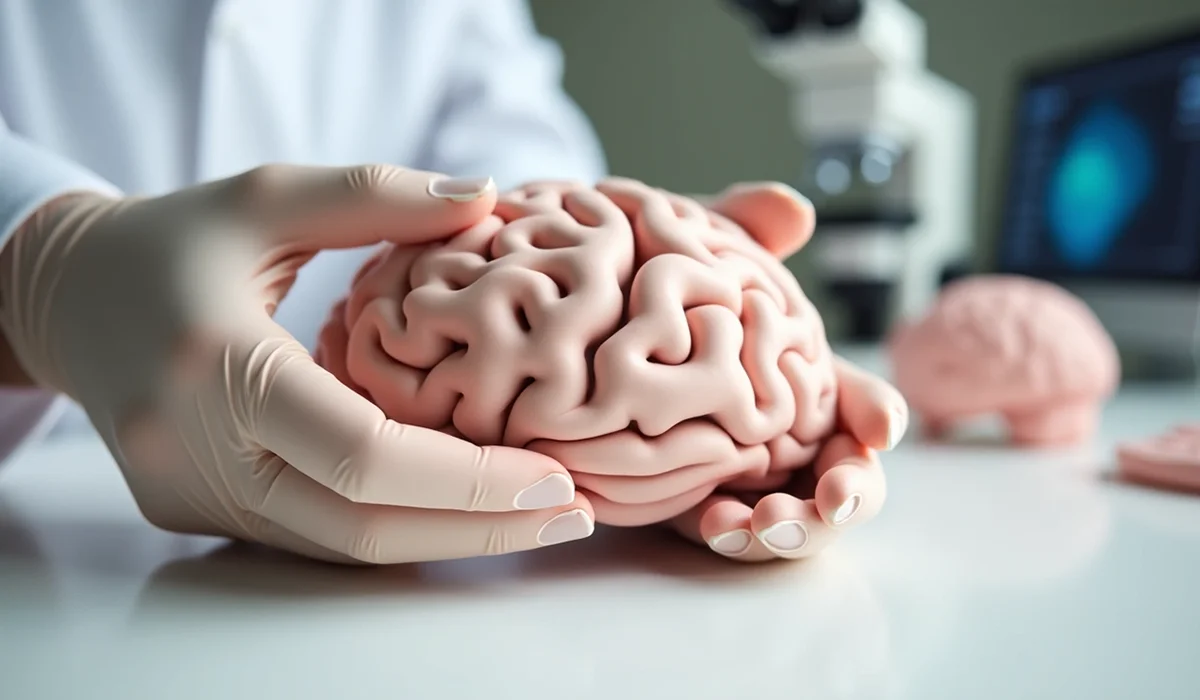Your brain rewires itself constantly, even as you read these words. Many people think adult brains become fixed and unchangeable. But research clearly shows this isn’t the case. Your brain’s remarkable power to reorganize itself by forming new neural connections – called neuroplasticity – lets you adapt, learn and bounce back from life’s biggest challenges at any age.
Research shows amazing results. People who practice mindfulness meditation see increased gray matter density in parts of their brain linked to self-awareness and emotional control. Cognitive behavioral therapy (CBT) helps 70% of people struggling with anxiety or depression by creating new neural pathways. The good news is that many more proven methods exist to rewire your brain, which we’ll explore in this piece. We’ll look at signs of brain rewiring and share exercises anyone can practice. The truth is you can rewire your brain no matter your age. This piece covers everything about this fascinating process, including ways to build lasting neural pathways.
What it really means to rewire your brain
Your brain works like an incredible network. It has over 100 billion neurons that create more than 100 trillion connections. These connections reshape themselves as you go through life [1]. This isn’t just a theory – it shows what happens when your brain “rewires” itself.
Neuroplasticity explained in simple terms
Neuroplasticity means your brain can adapt by changing its structure, functions, and connections [2]. Scientists used to think adult brains became fixed and unchangeable. Now we know your brain stays flexible throughout your life.
We focused on two main processes in neuroplasticity: structural plasticity (physical changes in neural circuits) and functional plasticity (changes in how neural circuits work) [3]. Your brain physically changes when you learn something new. New connections form between neurons, existing ones get stronger, and unused ones fade away [4]. This flexibility helps you adapt to new situations, heal from injuries, and pick up new skills.
How your brain forms and changes neural pathways
Neural pathways are connections that form when axons extend from neurons to make synapses with other neurons [5]. The “fire together, wire together” principle kicks in every time you practice something regularly – like meditation, playing music, or learning a new language [6].
Neurons that fire at the same time often create physical connections and become linked [6]. Newborn babies have about 2,500 synapses per neuron in their cerebral cortex. This number jumps to around 15,000 by age three [6]. Your brain then starts “synaptic pruning” – it removes unused connections while making frequent ones stronger [7].
Can you rewire your brain at any age?
Your brain’s ability to change doesn’t stop after childhood. Young brains adapt more easily because they have fewer established pathways – they’re more like blank canvases. But adult brains stay remarkably flexible throughout life [4].
Studies show that adults can handle complex learning environments. These challenges might push their limits but help them learn better and retain more information [8]. While neuroplasticity peaks during early development, it stays active your whole life. You just need more focused effort as you get older [9].
This has huge implications for everyone. You can always learn new skills, change habits, or bounce back from setbacks. Your brain’s lifelong ability to change helps you stay independent, maintain quality of life, and keep your mind sharp as you age [8].
The link between brain rewiring and emotional resilience
Emotions and neural connections work together in a powerful two-way relationship. Strong feelings physically change your brain’s structure. Your brain’s architecture, in turn, influences how you process emotions.
How thoughts shape emotional responses
Your brain processes emotions through complex, interconnected neural circuits that create interplay between thoughts and feelings. The limbic system—containing the hippocampus, hypothalamus, and amygdala—stores emotional memories. These memories guide future decisions, even without conscious recall. Repeated thought patterns strengthen neural connections, similar to how a path becomes clearer with regular use. Your limbic system alerts you when chronic stress hormones reach the brain. This can trigger unexplained symptoms or inflammation.
The role of neuroplasticity in overcoming trauma
Trauma substantially alters neural pathways. The brain often stays in a heightened fight-or-flight state, even in safe environments. Cortisol—the stress hormone—can flood the system if you relive traumatic memories. This activates the amygdala and creates a self-perpetuating cycle. The trauma survivor’s amygdala often becomes overly sensitive. This results in extreme alertness or withdrawal behaviors.
In spite of that, neuroplasticity offers hope. One expert explains, “Neuroplasticity refers to the brain’s ability to reorganize itself through new connections and brain growth… Treatment that considers the brain’s neuroplasticity can, in a sense, reverse the effects of trauma.” Evidence-based treatments like EMDR, cognitive behavioral therapy, and mindfulness-based therapies help survivors rewire their brains. These create new, non-traumatic responses to triggers.
Signs your brain is rewiring emotionally
Your brain develops new emotional pathways with noticeable changes. You’ll recover more quickly from setbacks—what once triggered hours of distress might cause only momentary discomfort now. Your emotional vocabulary might expand beyond simple states like happy, sad, or angry. Other signs include decreased alertness, reduced emotional reactivity to former triggers, and knowing how to stay present during uncomfortable experiences. These changes show your brain actively creating healthier neural networks.
Science-backed ways to rewire your brain
Science has discovered several proven ways to rewire your brain. These research-backed methods make use of neuroplasticity to create lasting changes in neural pathways.
Mindfulness and meditation
Meditation shapes brain regions linked to self-awareness and emotional control. Research shows that people who practice mindfulness regularly have more gray matter in their hippocampus and a smaller, less reactive amygdala [10]. Long-term meditators’ brains age slower, keeping a more youthful appearance [11]. Meditation also helps produce more GABA and serotonin – brain chemicals that lower anxiety and lift mood [12].
Cognitive behavioral therapy (CBT)
CBT changes how the brain works, particularly for emotional disorders. Children with anxiety who undergo CBT show reduced activity in frontal and parietal brain regions. This reflects better cognitive control networks [13]. A Stanford Medicine study revealed that CBT’s focus on problem-solving helped 32% of participants feel less depressed. Their brain circuits showed positive changes after just two months [14].
Physical exercise and brain-derived neurotrophic factor (BDNF)
Exercise triggers BDNF production, a protein vital for growing new brain cells and connections. Research analysis shows even one workout session boosts BDNF levels moderately (Hedges’ g = 0.46) [15]. High-intensity workouts create the largest increases in BDNF [16][17]. Resistance training shows the strongest effects [18].
Learning new skills or languages
New skills create stronger brain connections. Brain imaging studies show that repeated practice builds myelinated neural networks, forming stronger, lasting pathways [19]. Your neurons connect physically when they fire together repeatedly, linking previously separate brain areas.
Practicing gratitude and journaling
Dr. Pennebaker’s four-day journaling method takes just 15-30 minutes daily [20]. This writing approach rewires the brain and improves immune function, sleep, and emotional processing [21]. Gratitude activates reward centers in your brain, specifically the ventral tegmental area and nucleus accumbens, which release dopamine [22]. The medial prefrontal cortex becomes more active when you practice gratitude, and these positive effects last long after the exercise ends [23].
How to make brain rewiring easier and sustainable
Your brain’s neural pathways need more than just the right techniques to change permanently—you just need a strategic approach. Real-life application of neuroplasticity, not just theory, creates lasting change.
Start small and stay consistent
Modest steps begin the process of rewiring your brain. Neural changes can happen with just five minutes of daily breathwork, journaling, meditation, or stretching [24]. Small, sustainable habits that gradually strengthen neural connections work better than dramatic overhauls.
Visual cues in your environment substantially boost consistency. To name just one example, a journal by your bedside serves as a reminder to practice mindfulness before sleep or upon waking [25]. These visual prompts help build the routine your neural pathways need to form.
Note that neuroplasticity runs on regular, repeated practice, like any other skill [24]. Each moment of intentional self-awareness helps rewire your brain, whatever the duration.
Track your progress and emotional shifts
Your progress needs monitoring to provide feedback and motivation. Regular reflection sessions help assess your efforts, results, and mindset—this process is vital to build new neural pathways [25]. Journaling about emotional responses helps many people spot subtle improvements they might miss otherwise.
Your emotional rebound time after challenges tells an important story—as your brain rewires, you’ll bounce back faster from setbacks. These improvements, though subtle at times, show real neuroplastic changes.
Avoiding common mistakes in brain rewiring exercises
These common pitfalls can hurt your brain rewiring efforts:
- Underestimating patience requirements – Gradual change needs consistent effort. Habits might start forming in weeks, but deep-seated emotional patterns often take months to shift [6].
- Focusing solely on intensity – Research shows consistency matters more than intensity. Regular, moderate practice creates more sustainable neural changes than occasional intense sessions [26].
- Neglecting personalization – One size doesn’t fit all. Individual-specific brain training that matches your needs creates more effective neural adaptations [26].
- All-or-nothing thinking – Perfectionism hurts progress. Missing a day shouldn’t stop you—just resume your practice without self-criticism [25].
These core principles—starting small, tracking progress, and avoiding common mistakes—make rewiring your brain easier and more sustainable over time.
Conclusion
Neuroplasticity is one of the most enabling scientific discoveries of our time. This piece shows how our brains stay remarkably adaptable through life and form new neural connections as we experience things and consider our practices. Our current thought patterns or emotional responses don’t have to be permanent.
The evidence-backed methods we looked at – from mindfulness meditation to CBT, physical exercise, and gratitude practices – are a great way to get tools that anyone can use to reshape neural pathways. These changes don’t need complex interventions or expensive equipment, just consistent practice and patience.
The green approach we talked about shows that rewiring your brain happens step by step. Small daily practices ended up creating more lasting change than occasional intensive efforts. Your brain works best with regular, repeated activities that strengthen new neural connections while old, unhelpful pathways weaken over time.
Your capacity for neuroplasticity is an extraordinary gift. The brain you have today doesn’t have to be the brain you have tomorrow. You actively reshape your neural architecture each time you practice mindfulness, learn something new, exercise, or consciously move your thought patterns. This power to change stays with you always, whatever your age or past experiences.
The concept of neuroplasticity might sound complex, but rewiring your brain is surprisingly available. Every positive thought, new skill practiced, or moment of intentional calm creates tiny but meaningful changes. These small moves, when practiced consistently, turn into profound differences in how we experience and respond to the world around us.
References
[1] – https://www.ncbi.nlm.nih.gov/books/NBK234146/
[2] – https://www.ncbi.nlm.nih.gov/books/NBK557811/
[3] – https://pmc.ncbi.nlm.nih.gov/articles/PMC10741468/
[4] – https://www.niahealth.co/post/neuroplasticity
[5] – https://en.wikipedia.org/wiki/Neural_pathway
[6] – https://www.re-origin.com/articles/how-to-rewire-your-brain
[7] – https://www.verywellmind.com/what-is-brain-plasticity-2794886
[8] – https://pmc.ncbi.nlm.nih.gov/articles/PMC6128435/
[9] – https://mcpress.mayoclinic.org/healthy-aging/the-power-of-neuroplasticity-how-your-brain-adapts-and-grows-as-you-age/
[10] – https://pmc.ncbi.nlm.nih.gov/articles/PMC6312586/
[11] – https://www.realsimple.com/health/mind-mood/mindfulness-improves-brain-health-neuroplasticity
[12] – https://pmc.ncbi.nlm.nih.gov/articles/PMC11591838/
[13] – https://www.nih.gov/news-events/news-releases/cognitive-behavioral-therapy-alters-brain-activity-children-anxiety
[14] – https://med.stanford.edu/news/all-news/2024/09/cognitive-behaviora-therapy-depression.html
[15] – https://pmc.ncbi.nlm.nih.gov/articles/PMC4314337/
[16] – https://www.ahajournals.org/doi/10.1161/STROKEAHA.122.039919
[17] – https://www.sciencedirect.com/science/article/pii/S2095254621000971
[18] – https://www.frontiersin.org/journals/aging-neuroscience/articles/10.3389/fnagi.2022.981002/full
[19] – https://www.proctoracademy.org/explore-proctor/the-buzz/buzz-details/~board/the-buzz-a-window-into-the-proctor-experience/post/neuroplasticity-and-education-the-science-of-effective-learning
[20] – https://www.hubermanlab.com/episode/a-science-supported-journaling-protocol-to-improve-mental-physical-health
[21] – https://podcastnotes.org/huberman-lab/a-science-supported-journaling-protocol-to-improve-mental-physical-health-huberman-lab/
[22] – https://centerforneurowellness.com/gratitude-brain/
[23] – https://greatergood.berkeley.edu/article/item/how_gratitude_changes_you_and_your_brain
[24] – https://sites.bu.edu/daniellerousseau/2023/12/05/neuroplasticity-rewiring-your-brain-through-mindfulness/
[25] – https://www.research.colostate.edu/healthyagingcenter/2022/05/31/how-to-rewire-your-brain/
[26] – https://active-edge-physio.com.au/the-3-common-mistakes-that-cause-more-harm-than-help-in-stroke-rehabilitation/








